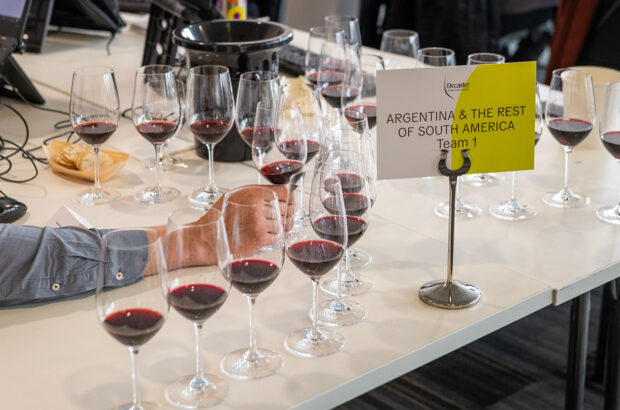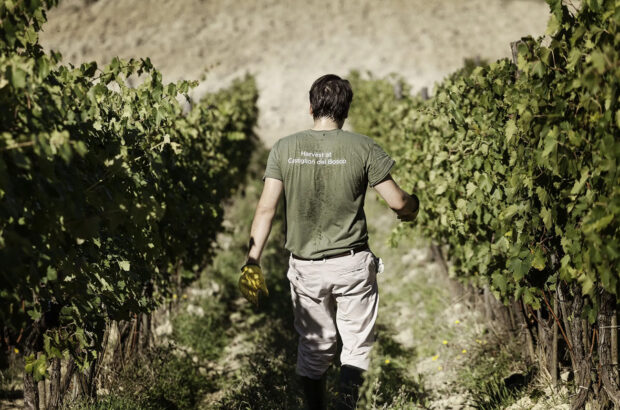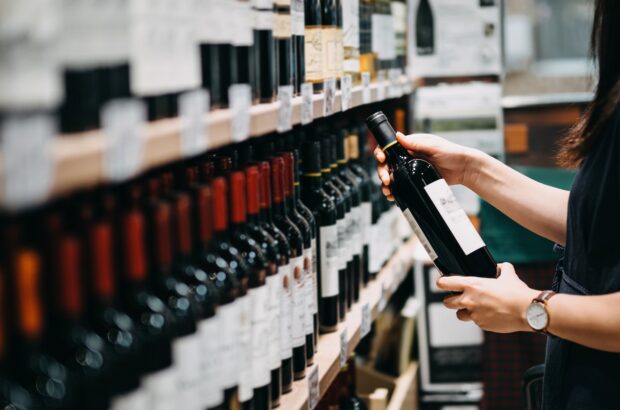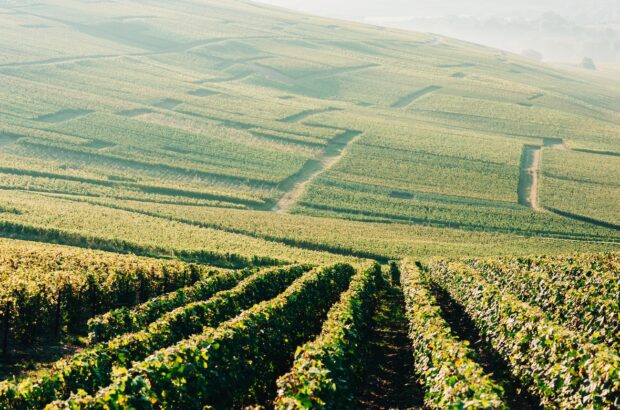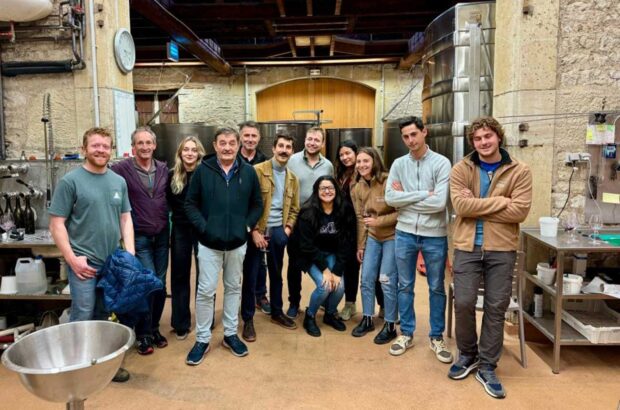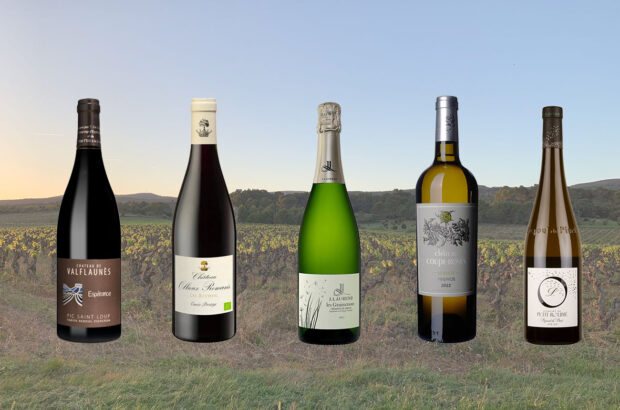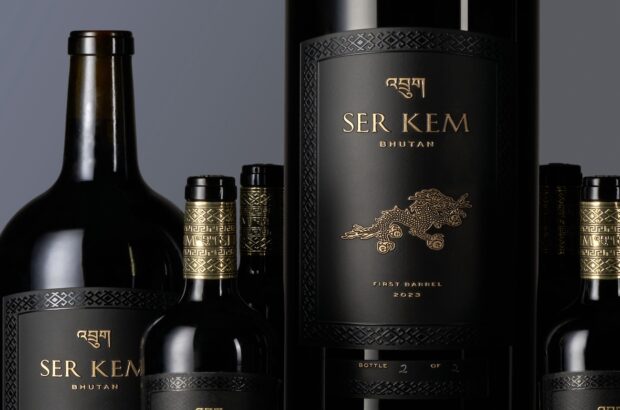It’s a bit like one of those bad dreams. There you are, with a line-up of glasses half full of red wine laid out in front of you. You know that you are going to be asked to identify the origins of those wines. No one will give you the slightest clue. And you’ve only got a few minutes per wine to do the job.
Nightmarish as this sounds, the scenario will be familiar to anyone who’s ever sat a blind-tasting wine exam. But let’s make the task a little bit easier, shall we? Let’s assume that you’re told that the wines all come from within the Bordeaux region.
Even then, trying to pin down the source of each of them is no easy task. Nevertheless, every glass of wine contains clues – the question is, what’s the best way of making these clues add up to a strong conclusion?
{"content":"PHA+4oCYTXkgYXBwcm9hY2ggaXMgdG8gdGhpbmsgYWJvdXQgdHlwaWNpdHks4oCZIGV4cGxhaW5zIEplcmVteSBDdWtpZXJtYW4gTVcsIGF1dGhvciBhbmQgZm9ybWVyIGRpcmVjdG9yIG9mIEZyYW5jZeKAmXMgS2VkZ2UgV2luZSBTY2hvb2wuIOKAmEkgd29ya2VkIGhhcmQgb24gaWRlbnRpZnlpbmcgYmVuY2htYXJrIGNoYXJhY3RlcmlzdGljcyBmb3IgZWFjaCBvZiB0aGUgZGlmZmVyZW50IGNvbW11bmVzLuKAmTwvcD4KPHA+Q3VraWVybWFuIHdvbiB0aGUgTWFkYW1lIEJvbGxpbmdlciBBd2FyZCBmb3IgZXhjZWxsZW5jZSBpbiB0YXN0aW5nIHRoZSB5ZWFyIHRoYXQgaGUgZ3JhZHVhdGVkICgyMDE3KSwgYW5kIGhhcyBjbGVhcmx5IHNwZW50IHRpbWUgaG9uaW5nIG5vdCBvbmx5IGhpcyB0YXN0aW5nIHNraWxscywgYnV0IGFsc28gdGhlIHRoZW9yZXRpY2FsIGZyYW1ld29yayB3aXRoaW4gd2hpY2ggaGUgZW1iZWRzIHRoZSBldmlkZW5jZSBoZSBnYXRoZXJzIGZyb20gdGhlIGdsYXNzLjwvcD4KPHA+PGRpdiBjbGFzcz0iYWQtY29udGFpbmVyIGFkLWNvbnRhaW5lci0tbW9iaWxlIj48ZGl2IGlkPSJwb3N0LWlubGluZS0yIiBjbGFzcz0iaXBjLWFkdmVydCI+PC9kaXY+PC9kaXY+PC9wPgo8cD5PdGhlcnMgaGF2ZSBhIG1vcmUgaW50dWl0aXZlIGFwcHJvYWNoLiDigJhGb3IgbWUsIHdpbmUgaXMgYWxsIGFib3V0IHRoZSBlbW90aW9uIHJhdGhlciB0aGFuIHRoZSB0ZWNobmljYWxpdGllcyzigJkgc2F5cyBDbGFpcmUgVGhldmVub3QgTVMsIGZvdW5kZXIgYW5kIGRpcmVjdG9yIG9mIFZpbnMtQ2xhaXJzLCBhIFVLLWJhc2VkIGltcG9ydGVyLiDigJhUaGUgYmVzdCB3YXkgdG8gZ2V0IHRvIGtub3cgZWFjaCBjb21tdW5lIGlzIHRvIGFzc29jaWF0ZSB0aGVtIHdpdGggcGVyc29uYWxpdGllcy7igJk8L3A+CjxoMj5OYXJyb3cgaXQgZG93bjwvaDI+CjxwPkkgYmVsaWV2ZSB0aGF0IHRoZSByb3V0ZSB0byBkZXRlcm1pbmluZyBvcmlnaW4gaW4gQm9yZGVhdXggYWx3YXlzIGJlZ2lucyB3aXRoIGEgcXVhbGl0eSBhc3Nlc3NtZW50LiBUaGUgc2ltcGxlc3Qgd2luZXMgY29tZSBmcm9tIHRoZSBnZW5lcmljIEJvcmRlYXV4IGFuZCBCb3JkZWF1eCBTdXDDqXJpZXVyIGFwcGVsbGF0aW9ucy4gVGhleeKAmXJlIHNlbGRvbSB0aGUgc2tpbm55LCBhZ2dyZXNzaXZlIHdpbmVzIHRoYXQgdXNlZCB0byBiZSB0aGUgbm9ybSwgYnV0IGRlc3BpdGUgdGhlIHJpcGVyIGZydWl0IGFuZCBtb3JlIHJvdW5kZWQgPHN0cm9uZz48YSBocmVmPSJodHRwczovL3d3dy5kZWNhbnRlci5jb20vbGVhcm4vdGFubmlucy00NTgxNC8iIHRhcmdldD0iX2JsYW5rIiByZWw9Im5vb3BlbmVyIG5vcmVmZXJyZXIiPnRhbm5pbnM8L2E+PC9zdHJvbmc+LCB0aGVyZeKAmXMgYWx3YXlzIGEgbGFjayBvZiBpbnRlbnNpdHkgYW5kIGxlbmd0aCB0aGF0IHNob3VsZCBtYWtlIGl0IGNsZWFyIHlvdeKAmXJlIG5vdCBkZWFsaW5nIHdpdGggYW55dGhpbmcgbW9yZSBzZXJpb3VzLjwvcD4KPHA+TWFyeSBHb3JtYW4tTWNBZGFtcyBNVywgYSBOZXcgWW9yay1iYXNlZCBjb25zdWx0YW50IGFuZCBCb3JkZWF1eCBzcGVjaWFsaXN0LCBiZWxpZXZlcyB0aGF0IGFzc2Vzc21lbnQgb2YgcXVhbGl0eSBoYXMgdG8gYmUgaG9saXN0aWMuIOKAmEl04oCZcyBhYm91dCB0aGUgZGVuc2l0eSBvZiB0aGUgd2luZSBhbmQgaXRzIHNoYXBlLiBEb2VzIHRoZSB3aW5lIGZpbGwgeW91ciBtb3V0aCwgZG9lcyBpdCBoYXZlIGEgcHJlc2VuY2UsIGRvZXMgaXQgaGF2ZSBkaXJlY3Rpb24gb3IgZG9lcyBpdCBqdXN0IGxpbXAgYWxvbmc\/4oCZIHNoZSBhc2tzLjwvcD4KPGRpdiBjbGFzcz0iYWQtY29udGFpbmVyIGFkLWNvbnRhaW5lci0tbW9iaWxlIj48ZGl2IGlkPSJwb3N0LWlubGluZS0zIiBjbGFzcz0iaXBjLWFkdmVydCI+PC9kaXY+PC9kaXY+CjxkaXYgaWQ9ImF0dGFjaG1lbnRfNTMxMTg2IiBzdHlsZT0id2lkdGg6IDYxMHB4IiBjbGFzcz0id3AtY2FwdGlvbiBhbGlnbm5vbmUiPjxpbWcgZmV0Y2hwcmlvcml0eT0iaGlnaCIgZGVjb2Rpbmc9ImFzeW5jIiBhcmlhLWRlc2NyaWJlZGJ5PSJjYXB0aW9uLWF0dGFjaG1lbnQtNTMxMTg2IiBjbGFzcz0ibGF6eWxvYWQgYmx1ci11cCBzaXplLWZ1bGwgd3AtaW1hZ2UtNTMxMTg2IiBkYXRhLXByb2Nlc3NlZCBzcmM9Imh0dHBzOi8vd3d3LmRlY2FudGVyLmNvbS93cC1jb250ZW50L3RoZW1lcy9zaW1iYS10aGVtZS9hc3NldHMvaW1hZ2VzL3BsYWNlaG9sZGVyLnBuZyIgZGF0YS1zcmM9Imh0dHBzOi8va2V5YXNzZXRzLnRpbWVpbmN1ay5uZXQvaW5zcGlyZXdwL2xpdmUvd3AtY29udGVudC91cGxvYWRzL3NpdGVzLzM0LzIwMjQvMDYvREVTMjk5LmJsaW5kX3Rhc3RpbmdfYm9yZGVhdXgubWFyeV9nb3JtYW5fbWNhZGFtc19tdy5qcGciIGFsdD0iIiB3aWR0aD0iNjAwIiBoZWlnaHQ9IjQwMCIgZGF0YS1zaXplcz0iYXV0byIgZGF0YS1zcmNzZXQ9Imh0dHBzOi8va2V5YXNzZXRzLnRpbWVpbmN1ay5uZXQvaW5zcGlyZXdwL2xpdmUvd3AtY29udGVudC91cGxvYWRzL3NpdGVzLzM0LzIwMjQvMDYvREVTMjk5LmJsaW5kX3Rhc3RpbmdfYm9yZGVhdXgubWFyeV9nb3JtYW5fbWNhZGFtc19tdy5qcGcgNjAwdywgaHR0cHM6Ly9rZXlhc3NldHMudGltZWluY3VrLm5ldC9pbnNwaXJld3AvbGl2ZS93cC1jb250ZW50L3VwbG9hZHMvc2l0ZXMvMzQvMjAyNC8wNi9ERVMyOTkuYmxpbmRfdGFzdGluZ19ib3JkZWF1eC5tYXJ5X2dvcm1hbl9tY2FkYW1zX213LTMwMHgyMDAuanBnIDMwMHcsIGh0dHBzOi8va2V5YXNzZXRzLnRpbWVpbmN1ay5uZXQvaW5zcGlyZXdwL2xpdmUvd3AtY29udGVudC91cGxvYWRzL3NpdGVzLzM0LzIwMjQvMDYvREVTMjk5LmJsaW5kX3Rhc3RpbmdfYm9yZGVhdXgubWFyeV9nb3JtYW5fbWNhZGFtc19tdy0xMzV4OTAuanBnIDEzNXcsIGh0dHBzOi8va2V5YXNzZXRzLnRpbWVpbmN1ay5uZXQvaW5zcGlyZXdwL2xpdmUvd3AtY29udGVudC91cGxvYWRzL3NpdGVzLzM0LzIwMjQvMDYvREVTMjk5LmJsaW5kX3Rhc3RpbmdfYm9yZGVhdXgubWFyeV9nb3JtYW5fbWNhZGFtc19tdy0zMjB4MjEzLmpwZyAzMjB3IiBzaXplcz0iKG1heC13aWR0aDogNjAwcHgpIDEwMHZ3LCA2MDBweCIgLz48cCBpZD0iY2FwdGlvbi1hdHRhY2htZW50LTUzMTE4NiIgY2xhc3M9IndwLWNhcHRpb24tdGV4dCI+TWFyeSBHb3JtYW4tTWNBZGFtcyBNVy48L3A+PC9kaXY+CjxoMj5NZXJsb3QvQ2FiZXJuZXQ8L2gyPgo8cD5Zb3VyIG5leHQgc3RlcCBzaG91bGQgYmUgdG8gZGV0ZXJtaW5lIHdoZXRoZXIgeW91ciB3aW5lIGNvbnRhaW5zIG1vcmUgPHN0cm9uZz48YSBocmVmPSJodHRwczovL3d3dy5kZWNhbnRlci5jb20vd2luZS9ncmFwZS12YXJpZXRpZXMvbWVybG90LyIgdGFyZ2V0PSJfYmxhbmsiIHJlbD0ibm9vcGVuZXIgbm9yZWZlcnJlciI+TWVybG90PC9hPjwvc3Ryb25nPiBvciBtb3JlIDxzdHJvbmc+PGEgaHJlZj0iaHR0cHM6Ly93d3cuZGVjYW50ZXIuY29tL3dpbmUvZ3JhcGUtdmFyaWV0aWVzL2NhYmVybmV0LXNhdXZpZ25vbi8iIHRhcmdldD0iX2JsYW5rIiByZWw9Im5vb3BlbmVyIG5vcmVmZXJyZXIiPkNhYmVybmV0IFNhdXZpZ25vbjwvYT48L3N0cm9uZz4sIGFzIHlvdXIgY29uY2x1c2lvbiB3aWxsIHB1c2ggeW91IHRvd2FyZHMgZWl0aGVyIGEgPHN0cm9uZz48YSBocmVmPSJodHRwczovL3d3dy5kZWNhbnRlci5jb20vbGVhcm4vbGVmdC1hbmQtcmlnaHQtYmFuay1ib3JkZWF1eC1leHBsYWluZWQtNDc2NTIyLyIgdGFyZ2V0PSJfYmxhbmsiIHJlbD0ibm9vcGVuZXIgbm9yZWZlcnJlciI+UmlnaHQgQmFuayBvciBhIExlZnQgQmFuazwvYT48L3N0cm9uZz4gb3JpZ2luLCByZXNwZWN0aXZlbHkuPC9wPgo8ZGl2IGNsYXNzPSJhZC1jb250YWluZXIgYWQtY29udGFpbmVyLS1tb2JpbGUiPjxkaXYgaWQ9InBvc3QtaW5saW5lLTQiIGNsYXNzPSJpcGMtYWR2ZXJ0Ij48L2Rpdj48L2Rpdj4KPHA+U2VyYWZpbiBBbHZhcmFkbyBNUywgZGlyZWN0b3Igb2Ygd2luZSBlZHVjYXRpb24gZm9yIG1ham9yIFVTIGRpc3RyaWJ1dG9yIFNvdXRoZXJuIEdsYXplcuKAmXMgV2luZSAmYW1wOyBTcGlyaXRzLCB6ZXJvZXMgaW4gb24gdGhlIGNoYXJhY3RlciBvZiB0aGUgd2luZXMuIOKAmFdpbmVzIHRoYXQgYXJlIG1vc3RseSBiYXNlZCBvbiBDYWJlcm5ldCBoYXZlIHRhbm5pbnMgdGhhdCBhcmUgbW9yZSBwcm9ub3VuY2VkIGFuZCBncmlwcHksIHdoaWxlIHRob3NlIG9mIE1lcmxvdCB0ZW5kIHRvIGJlIGEgYml0IG1vcmUgaW50ZWdyYXRlZCzigJkgaGUgcG9pbnRzIG91dC48L3A+CjxwPuKAmENhYmVybmV0IGFsc28gaGFzIGFuIGVsZXZhdGVkIGhlcmJhY2VvdXMgY2hhcmFjdGVyLCB3aGlsZSBNZXJsb3QgaGFzIGxlc3Mgb2YgdGhhdCA8c3Ryb25nPjxhIGhyZWY9Imh0dHBzOi8vd3d3LmRlY2FudGVyLmNvbS9sZWFybi9hZHZpY2UvbWVhbi13aW5lLXRhc3Rlcy1ncmVlbi0zOTMwMTcvIiB0YXJnZXQ9Il9ibGFuayIgcmVsPSJub29wZW5lciBub3JlZmVycmVyIj5weXJhemluZTwvYT48L3N0cm9uZz4gY2hhcmFjdGVyIOKAkyBpdOKAmXMgbXVjaCBtb3JlIHN1YnRsZSwgaXTigJlzIG5vdCBkcml2aW5nIHRoZSBzdHlsZSBvZiB0aGUgd2luZS4gRmluYWxseSwgQ2FiZXJuZXQtYmFzZWQgd2luZXMgdGVuZCB0byBoYXZlIG1vcmUgZnJlc2huZXNzLCBtb3JlIGFjaWRpYyBsaWZ0LCB3aGlsZSB0aG9zZSB3aXRoIG1vcmUgTWVybG90IHRlbmQgdG8gYmUgcm91bmRlci7igJk8L3A+CjxkaXYgY2xhc3M9ImFkLWNvbnRhaW5lciBhZC1jb250YWluZXItLW1vYmlsZSI+PGRpdiBpZD0icG9zdC1pbmxpbmUtNSIgY2xhc3M9ImlwYy1hZHZlcnQiPjwvZGl2PjwvZGl2Pgo8cD5CdXQgYmV3YXJlLiDigJhZb3UgbWFrZSB0aGluZ3MgZGlmZmljdWx0IGZvciB5b3Vyc2VsZiBpZiB5b3UgZGVwZW5kIG9uIGZsYXZvdXJzIGFuZCBhcm9tYXRpY3MgcmF0aGVyIHRoYW4gc3RydWN0dXJlLOKAmSB3YXJucyBDdWtpZXJtYW4uIOKAmEl04oCZcyB2ZXJ5IGVhc3kgdG8gYmUgbWlzdGFrZW4sIGVzcGVjaWFsbHkgd2hlbiB5b3XigJlyZSBkZWFsaW5nIHdpdGggYmxlbmRzLiBTdHJ1Y3R1cmUgaXMgcmVhbGx5IGtleSBoZXJlOiB0aGVyZSBhcmUgaGlnaGVyIGxldmVscyBvZiBhY2lkaXR5IGluIENhYmVybmV0LCBsZXNzIHJvdW5kbmVzcyBhbmQgbW9yZSBvZiBhIHNlbnNhdGlvbiBvZiBncmlwLuKAmTwvcD4KPGgyPlNwZWN0cnVtIG9mIHF1YWxpdHk8L2gyPgo8cD5J4oCZdmUgYWx3YXlzIHRob3VnaHQgb2YgYmxpbmQgdGFzdGluZyBleGVyY2lzZXMgYXMgYmVpbmcgc2ltaWxhciB0byB0YWtpbmcgYSB3YWxrLiBBcyB5b3UgdHJhdmVsIGFsb25nIGEgcGF0aCwgeW91IHJlYWNoIHBvaW50cyBhdCB3aGljaCB5b3UgaGF2ZSB0byBkZWNpZGUgd2hldGhlciB0byB0dXJuIHJpZ2h0IG9yIGhlYWQgbGVmdC4gU28sIGF0IHRoaXMgc3RhZ2UsIGhhdmluZyBvcHRlZCB0byB0dXJuIHJpZ2h0IHRvd2FyZHMgYSBNZXJsb3QgZGVzdGluYXRpb24sIG9yIGxlZnQgdG93YXJkcyBDYWJlcm5ldCwgeW91ciBuZXh0IGRlY2lzaW9uIGlzIGFub3RoZXIgcXVhbGl0YXRpdmUgb25lLjwvcD4KPHA+SWYgeW914oCZcmUgb24gdGhlIFJpZ2h0IEJhbmssIGxlc3Nlci1xdWFsaXR5IHdpbmVzIHdpbGwgY29tZSBmcm9tIHNhdGVsbGl0ZSBhcHBlbGxhdGlvbnMgKHRoaW5rIDxzdHJvbmc+PGEgaHJlZj0iaHR0cHM6Ly93d3cuZGVjYW50ZXIuY29tL2ZlYXR1cmVzL2NvdGVzLWRlLWJvdXJnLTI0ODQwNC8iIHRhcmdldD0iX2JsYW5rIiByZWw9Im5vb3BlbmVyIG5vcmVmZXJyZXIiPkPDtHRlcyBkZSBCb3VyZzwvYT48L3N0cm9uZz4gb3IgQmxheWUgQ8O0dGVzIGRlIEJvcmRlYXV4LCA8c3Ryb25nPjxhIGhyZWY9Imh0dHBzOi8vd3d3LmRlY2FudGVyLmNvbS9mZWF0dXJlcy9sYWxhbmRlLWRlLXBvbWVyb2wtcG9vci1tYW5zLXBvbWVyb2wtMjQ3ODAxLyIgdGFyZ2V0PSJfYmxhbmsiIHJlbD0ibm9vcGVuZXIgbm9yZWZlcnJlciI+TGFsYW5kZS1kZS1Qb21lcm9sPC9hPjwvc3Ryb25nPiwgZXRjKSBhbmQgYmV0dGVyIHdpbmVzIHRlbmQgdG8gYmUgZnJvbSA8c3Ryb25nPjxhIGhyZWY9Imh0dHBzOi8vd3d3LmRlY2FudGVyLmNvbS9wcmVtaXVtL3VuZGVyc3RhbmRpbmctcG9tZXJvbC1hdC10aHJlZS1wcmljZS1wb2ludHMtNDgyMzg4LyIgdGFyZ2V0PSJfYmxhbmsiIHJlbD0ibm9vcGVuZXIgbm9yZWZlcnJlciI+UG9tZXJvbDwvYT4gPC9zdHJvbmc+YW5kIDxzdHJvbmc+PGEgaHJlZj0iaHR0cHM6Ly93d3cuZGVjYW50ZXIuY29tL2xlYXJuL3N0LWVtaWxpb24tY2xhc3NpZmljYXRpb24tZG8tdmluZXlhcmRzLW1hdHRlci1hc2stZGVjYW50ZXItNDE3OTczLyIgdGFyZ2V0PSJfYmxhbmsiIHJlbD0ibm9vcGVuZXIgbm9yZWZlcnJlciI+U3Qtw4ltaWxpb248L2E+PC9zdHJvbmc+LiBPbiB0aGUgTGVmdCBCYW5rLCB3aW5lcyBvZiB0aGUgaGlnaGVzdCBxdWFsaXR5IHdpbGwgYmUgZ3JhbmRzIGNydXMgY2xhc3PDqXMsIGFuZCB3aWxsIHRoZXJlZm9yZSBjb21lIGZyb20gdGhlIGNvbW11bmVzIG9mIChub3J0aCB0byBzb3V0aCkgPGEgaHJlZj0iaHR0cHM6Ly93d3cuZGVjYW50ZXIuY29tL3ByZW1pdW0vcmVnaW9uYWwtcHJvZmlsZS1zdC1lc3RlcGhlLXBsdXMtMTctd2luZXMtd29ydGgtc2Vla2luZy1vdXQtNTA1MDcyLyIgdGFyZ2V0PSJfYmxhbmsiIHJlbD0ibm9vcGVuZXIgbm9yZWZlcnJlciI+PHN0cm9uZz5TdC1Fc3TDqHBoZTwvc3Ryb25nPjwvYT4sIDxzdHJvbmc+PGEgaHJlZj0iaHR0cHM6Ly93d3cuZGVjYW50ZXIuY29tL3ByZW1pdW0vcGF1aWxsYWMtcmVnaW9uYWwtcHJvZmlsZS1wbHVzLXRvcC13aW5lcy10by10cnktNDU5NzM2LyIgdGFyZ2V0PSJfYmxhbmsiIHJlbD0ibm9vcGVuZXIgbm9yZWZlcnJlciI+UGF1aWxsYWM8L2E+PC9zdHJvbmc+LCA8c3Ryb25nPjxhIGhyZWY9Imh0dHBzOi8vd3d3LmRlY2FudGVyLmNvbS9wcmVtaXVtL3JlZ2lvbmFsLXByb2ZpbGUtc3QtanVsaWVuLXdpbmVzLTQzOTM3NS8iIHRhcmdldD0iX2JsYW5rIiByZWw9Im5vb3BlbmVyIG5vcmVmZXJyZXIiPlN0LUp1bGllbjwvYT48L3N0cm9uZz4gb3IgPHN0cm9uZz48YSBocmVmPSJodHRwczovL3d3dy5kZWNhbnRlci5jb20vcHJlbWl1bS9yZWdpb25hbC1wcm9maWxlLW1hcmdhdXgtNDgyNjIyLyIgdGFyZ2V0PSJfYmxhbmsiIHJlbD0ibm9vcGVuZXIgbm9yZWZlcnJlciI+TWFyZ2F1eDwvYT48L3N0cm9uZz4uPC9wPgo8ZGl2IGlkPSJhdHRhY2htZW50XzUzMTE4OSIgc3R5bGU9IndpZHRoOiA2MTBweCIgY2xhc3M9IndwLWNhcHRpb24gYWxpZ25ub25lIj48aW1nIGRlY29kaW5nPSJhc3luYyIgYXJpYS1kZXNjcmliZWRieT0iY2FwdGlvbi1hdHRhY2htZW50LTUzMTE4OSIgY2xhc3M9Imxhenlsb2FkIGJsdXItdXAgc2l6ZS1mdWxsIHdwLWltYWdlLTUzMTE4OSIgZGF0YS1wcm9jZXNzZWQgc3JjPSJodHRwczovL3d3dy5kZWNhbnRlci5jb20vd3AtY29udGVudC90aGVtZXMvc2ltYmEtdGhlbWUvYXNzZXRzL2ltYWdlcy9wbGFjZWhvbGRlci5wbmciIGRhdGEtc3JjPSJodHRwczovL2tleWFzc2V0cy50aW1laW5jdWsubmV0L2luc3BpcmV3cC9saXZlL3dwLWNvbnRlbnQvdXBsb2Fkcy9zaXRlcy8zNC8yMDI0LzA2L1dXV19UYXN0aW5nX1dlc3Rib3VybmVfVGVycmFjZV9fRFNDOTY1OC5qcGciIGFsdD0iIiB3aWR0aD0iNjAwIiBoZWlnaHQ9IjQwMCIgZGF0YS1zaXplcz0iYXV0byIgZGF0YS1zcmNzZXQ9Imh0dHBzOi8va2V5YXNzZXRzLnRpbWVpbmN1ay5uZXQvaW5zcGlyZXdwL2xpdmUvd3AtY29udGVudC91cGxvYWRzL3NpdGVzLzM0LzIwMjQvMDYvV1dXX1Rhc3RpbmdfV2VzdGJvdXJuZV9UZXJyYWNlX19EU0M5NjU4LmpwZyA2MDB3LCBodHRwczovL2tleWFzc2V0cy50aW1laW5jdWsubmV0L2luc3BpcmV3cC9saXZlL3dwLWNvbnRlbnQvdXBsb2Fkcy9zaXRlcy8zNC8yMDI0LzA2L1dXV19UYXN0aW5nX1dlc3Rib3VybmVfVGVycmFjZV9fRFNDOTY1OC0zMDB4MjAwLmpwZyAzMDB3LCBodHRwczovL2tleWFzc2V0cy50aW1laW5jdWsubmV0L2luc3BpcmV3cC9saXZlL3dwLWNvbnRlbnQvdXBsb2Fkcy9zaXRlcy8zNC8yMDI0LzA2L1dXV19UYXN0aW5nX1dlc3Rib3VybmVfVGVycmFjZV9fRFNDOTY1OC0xMzV4OTAuanBnIDEzNXcsIGh0dHBzOi8va2V5YXNzZXRzLnRpbWVpbmN1ay5uZXQvaW5zcGlyZXdwL2xpdmUvd3AtY29udGVudC91cGxvYWRzL3NpdGVzLzM0LzIwMjQvMDYvV1dXX1Rhc3RpbmdfV2VzdGJvdXJuZV9UZXJyYWNlX19EU0M5NjU4LTMyMHgyMTMuanBnIDMyMHciIHNpemVzPSIobWF4LXdpZHRoOiA2MDBweCkgMTAwdncsIDYwMHB4IiAvPjxwIGlkPSJjYXB0aW9uLWF0dGFjaG1lbnQtNTMxMTg5IiBjbGFzcz0id3AtY2FwdGlvbi10ZXh0Ij5QYXJ0IG9mIHRoZSBEV1dBIEJvcmRlYXV4IGp1ZGdpbmcgdGVhbSBoYXJkIGF0IGl0OiBMeWRpYSBIYXJyaXNvbiBNVywgRGVjYW50ZXIgUHJlbWl1bSAmYW1wOyBCb3JkZWF1eCBFZGl0b3IgR2VvcmdpZSBIaW5kbGUgYW5kIFJvYmVydCBNYXRoaWFzLjwvcD48L2Rpdj4KPHA+VGhlIG1vcmUgc291dGhlcmx5IGFwcGVsbGF0aW9ucyBvZiA8c3Ryb25nPjxhIGhyZWY9Imh0dHBzOi8vd3d3LmRlY2FudGVyLmNvbS9wcmVtaXVtL3VuZGVyc3RhbmRpbmctZ3JhdmVzLXBsdXMtMTItdG9wLXZhbHVlLXdpbmVzLXdvcnRoLXNlZWtpbmctb3V0LTQ2MDkxOS8iIHRhcmdldD0iX2JsYW5rIiByZWw9Im5vb3BlbmVyIG5vcmVmZXJyZXIiPkdyYXZlczwvYT4gPC9zdHJvbmc+YW5kLCBpbiBwYXJ0aWN1bGFyLCA8YSBocmVmPSJodHRwczovL3d3dy5kZWNhbnRlci5jb20vcHJlbWl1bS9wZXNzYWMtbGVvZ25hbi1zZXR0aW5nLXRoZS1wYWNlLTUwNTIyNC8iIHRhcmdldD0iX2JsYW5rIiByZWw9Im5vb3BlbmVyIG5vcmVmZXJyZXIiPjxzdHJvbmc+UGVzc2FjLUzDqW9nbmFuPC9zdHJvbmc+PC9hPiBhcmUgYWxzbyB0eXBpY2FsbHkgaW5jbHVkZWQgYWxvbmdzaWRlIHRoZSBtb3JlIG5vcnRoZXJseSBjbGFzc2VkIGdyb3d0aHMsIGV2ZW4gdGhvdWdoIHRoZXkgd2VyZW7igJl0IHBhcnQgb2YgdGhlIDxzdHJvbmc+PGEgaHJlZj0iaHR0cHM6Ly93d3cuZGVjYW50ZXIuY29tL2ZlYXR1cmVzL3RoZS0xODU1LWNsYXNzaWZpY2F0aW9uLW9uLXRoZS1tYXJrLW9yLW1hcmtldGluZy1wbG95LTI0NjU3NC8iIHRhcmdldD0iX2JsYW5rIiByZWw9Im5vb3BlbmVyIG5vcmVmZXJyZXIiPjE4NTUgY2xhc3NpZmljYXRpb248L2E+PC9zdHJvbmc+ICh3aXRoIHRoZSBleGNlcHRpb24gb2YgUGVzc2FjLUzDqW9nbmFuIGZpcnN0IGdyb3d0aCA8c3Ryb25nPjxhIGhyZWY9Imh0dHBzOi8vd3d3LmRlY2FudGVyLmNvbS9mZWF0dXJlcy9oaXN0b3J5LWluLWEtYm90dGxlLWhhdXQtYnJpb24tMjQ4OTU4LyIgdGFyZ2V0PSJfYmxhbmsiIHJlbD0ibm9vcGVuZXIgbm9yZWZlcnJlciI+Q2jDonRlYXUgSGF1dC1CcmlvbjwvYT48L3N0cm9uZz4pLiBXaW5lcyBvZiBsZXNzZXIgcXVhbGl0eSBvbiB0aGUgTGVmdCBCYW5rIG1heSBiZSBzZWNvbmQgd2luZSBib3R0bGluZ3MgKG9yIGV2ZW4gYSB0aGlyZCB3aW5lKSBmcm9tIGNydSBjbGFzc8OpIHByb3BlcnRpZXMsIG9yIDxzdHJvbmc+PGEgaHJlZj0iaHR0cHM6Ly93d3cuZGVjYW50ZXIuY29tL3dpbmUtbmV3cy9vcGluaW9uL25ld3MtYmxvZ3MtYW5zb24vYW5zb24tbmV3LWNydS1ib3VyZ2VvaXMtY2xhc3NpZmljYXRpb24tNDMyNjM0LyIgdGFyZ2V0PSJfYmxhbmsiIHJlbD0ibm9vcGVuZXIgbm9yZWZlcnJlciI+Y3J1IGJvdXJnZW9pczwvYT48L3N0cm9uZz4uPC9wPgo8cD5Bbm90aGVyIGNsdWUgY29tZXMgZnJvbSBvYWsgdXNlOiBzaW5jZSA8c3Ryb25nPjxhIGhyZWY9Imh0dHBzOi8vd3d3LmRlY2FudGVyLmNvbS9sZWFybi9vYWstYmFycmVscy0zMzU5OTAvIiB0YXJnZXQ9Il9ibGFuayIgcmVsPSJub29wZW5lciBub3JlZmVycmVyIj5uZXcgb2FrPC9hPjwvc3Ryb25nPiBpcyBleHBlbnNpdmUsIHRoZXJlIGlzIGdlbmVyYWxseSBncmVhdGVyIHVzZSBvZiBpdCBtYWRlIGluIHRoZSBtYXR1cmF0aW9uIG9mIHRoZSBoaWdoLWVuZCB3aW5lcyAoYWx0aG91Z2ggbWFueSBwcm9wZXJ0aWVzIGhhdmUgbm93IHN0ZXBwZWQgYXdheSBmcm9tIHRoZSBsYXZpc2ggb2FrIGxldmVscyBvZiB5ZXN0ZXJ5ZWFyKS48L3A+CjxwPkl0IHNob3VsZCBiZSBub3RlZCwgZXZlbiB3aXRoaW4gdGhlIGJyb2FkIGJydXNoc3Ryb2tlcyBvZiB0aGlzIGdlbmVyYWwgb3V0bGluZSwgdGhhdCB0aGVyZSB3aWxsIGJlIGV4Y2VwdGlvbnMgdG8gdGhlIHJ1bGUuIFRoZXJlIGlzIG5vIGRvdWJ0IHRoYXQgdGhlcmUgYXJlIHdpbmVzIGluIHRoZSA8c3Ryb25nPjxhIGhyZWY9Imh0dHBzOi8vd3d3LmRlY2FudGVyLmNvbS9wcmVtaXVtL2V4cGVydHMtY2hvaWNlLWNhc3RpbGxvbi0yMDE2LWNvdGVzLWRlLWJvcmRlYXV4LTQzMDY2Ni8iIHRhcmdldD0iX2JsYW5rIiByZWw9Im5vb3BlbmVyIG5vcmVmZXJyZXIiPkFPUCBDYXN0aWxsb24gQ8O0dGVzIGRlIEJvcmRlYXV4PC9hPjwvc3Ryb25nPiB0aGF0IG91dGNsYXNzIHNvbWUgb2YgdGhlIGxlc3NlciBvZmZlcmluZ3Mgb2YgU3Qtw4ltaWxpb24sIGZvciBpbnN0YW5jZSwgYnV0IGluIGdlbmVyYWwgdGVybXMgdGhpcyBpcyBhIHdvcmthYmxlIHJ1bGUgb2YgdGh1bWIuPC9wPgo8aHI+CjxkaXYgY2xhc3M9ImJyZWFrb3V0IHBhbGV0dGUtYSBwYW5lbCBwYW5lbC1kZWZhdWx0Ij48ZGl2IGNsYXNzPSJwYW5lbC1ib2R5Ij48ZGl2IGNsYXNzPSdicmVha291dC1jb250ZW50Jz48L3A+CjxoMj5CbGluZCB0YXN0aW5nIEJvcmRlYXV4OiBJZGVudGlmeWluZyB2aW50YWdlczwvaDI+CjxwPkFzIHdpdGggaWRlbnRpZmljYXRpb24gb2Ygb3JpZ2luLCBkZXRlcm1pbmluZyA8c3Ryb25nPjxhIGhyZWY9Imh0dHBzOi8vd3d3LmRlY2FudGVyLmNvbS9sZWFybi92aW50YWdlLWd1aWRlcy9ib3JkZWF1eC12aW50YWdlLWd1aWRlLyIgdGFyZ2V0PSJfYmxhbmsiIHJlbD0ibm9vcGVuZXIgbm9yZWZlcnJlciI+dmludGFnZXM8L2E+IDwvc3Ryb25nPnJlcXVpcmVzIHRoZSB0YXN0ZXIgdG8gaGF2ZSBhIHRoZW9yZXRpY2FsIGZyYW1ld29yayB3aXRoaW4gd2hpY2ggdG8gd29yay4gQnV0IGJlZm9yZSB5b3UgZXZlbiBzdGFydCB0aGlua2luZyBhYm91dCB2aW50YWdlLCB5b3UgbmVlZCB0byBuYXJyb3cgZG93biB5b3VyIGZyYW1lIG9mIHJlZmVyZW5jZS48L3A+CjxwPiYjODIxNjtZb3UgaGF2ZSB0byB1c2UgbG90cyBvZiBkaWZmZXJlbnQgY2x1ZXMgdG8gZ2V0IHlvdSB0byB0aGUgcmlnaHQga2luZCBvZiBhZ2UgYnJhY2tldCzigJkgcG9pbnRzIG91dCBTZXJhZmluIEFsdmFyYWRvIE1TIG9mIFVTIGRpc3RyaWJ1dG9yIFNvdXRoZXJuIEdsYXplcuKAmXMuIOKAmElzIHRoZSB3aW5lIHByaW1hcnkgW2ZsYXZvdXJdIGZvY3VzZWQgb3IgaGFzIGl0IGdvdCA8c3Ryb25nPjxhIGhyZWY9Imh0dHBzOi8vd3d3LmRlY2FudGVyLmNvbS9sZWFybi91bmRlcnN0YW5kaW5nLXdpbmUtYXJvbWFzLTMyOTk0MC8iIHRhcmdldD0iX2JsYW5rIiByZWw9Im5vb3BlbmVyIG5vcmVmZXJyZXIiPnRlcnRpYXJ5PC9hPiA8L3N0cm9uZz5ub3RlcywgYW5kIGlmIHNvLCBob3cgZGV2ZWxvcGVkIGlzIGl0PyBBcmUgdGhlIG9hayBhbmQgdGhlIHRhbm5pbnMgYm90aCB3ZWxsIGludGVncmF0ZWQ\/IFdoYXQgZG9lcyB0aGUgY29sb3VyIHRlbGwgeW91IGFib3V0IFt0aGUgd2luZeKAmXNdIGRldmVsb3BtZW50P+KAmTwvcD4KPHA+QWxsIG9mIHRoZXNlIGxlYWRzIGNhbiBiZSB1c2VkIHRvIHBvaW50IHRoZSB0YXN0ZXIgdG93YXJkcyBhbiBhcHByb3hpbWF0ZSBhZ2UsIGFsdGhvdWdoIHRoZSByYW5nZSBvZiB2aW50YWdlcyB5b3UgbmVlZCB0byBjb25zaWRlciBnZXRzIGJyb2FkZXIgYXMgdGhlIHdpbmUgZ2V0cyBvbGRlciDigJMgYW5kIHlvdSBoYXZlIHRvIGJlYXIgaW4gbWluZCB0aGF0IGdvb2QgQm9yZGVhdXggdGFrZXMgZmFyIGxvbmdlciB0byBhZ2UgdGhhbiB5b3UgcHJvYmFibHkgdGhpbmsgaXQgZG9lcy4gKEkgcmVjZW50bHkgb3BlbmVkIGEgYm90dGxlIG9mIGEgcHJldHR5IHJlc3BlY3RhYmxlIGNydSBjbGFzc8OpIGZyb20gdGhlIDIwMTAgdmludGFnZSwgYW5kIHRoZXJlIHdhcyBvbmx5IGEgaGludCBvZiBnYXJuZXQgY29sb3VyIGF0IHRoZSByaW0gYW5kIHRoZSBtZXJlc3Qgc3VnZ2VzdGlvbiBvZiBlYXJ0aHkgZGV2ZWxvcG1lbnQgb24gdGhlIHBhbGF0ZS4pPC9wPgo8cD5PbmNlIHlvdeKAmXZlIGRlY2lkZWQgb24gcm91Z2hseSBob3cgb2xkIHlvdXIgd2luZSBpcywgeW91ciBuZXh0IHN0ZXAgaXMgdG8gdHJpYWdlIGl0LiBJcyB0aGUgd2luZSBmcm9tIGEgY29vbCwgZGFtcCB2aW50YWdlIGxpa2UgMjAxMiBvciAyMDEzICh3aXRoIGxlc3MgY29uY2VudHJhdGlvbiBhbmQgbW9yZSBvZiB0aGF0IHVuZGVycmlwZSBoZXJiYWNlb3VzIGNoYXJhY3Rlcik\/IElzIGl0IGZyb20gYSB2ZXJ5IHdhcm0sIGRyeSB2aW50YWdlIGxpa2UgMjAxOCBvciAyMDIyIChoaWdoZXIgYWxjb2hvbCwgcmlwZXIgZnJ1aXQsIGxvd2VyIGFjaWRpdHkpPzwvcD4KPHA+T3IgaXMgaXQgZnJvbSBhIGp1c3QtcmlnaHQsIGNsYXNzaWMgR29sZGlsb2NrcyB2aW50YWdlLCBvZiB0aGUgb3JkZXIgb2YgMjAxNiAoZXZlcnl0aGluZyBzaXRzIG5lYXRseSB3aXRoaW4gdGhlIGNsYXNzaWMgcGFyYW1ldGVycyB5b3XigJlkIGV4cGVjdCBvZiBCb3JkZWF1eCk\/IEFza2luZyB5b3Vyc2VsZiB0aGVzZSBxdWVzdGlvbnMgd2lsbCBoZWxwIHlvdSBuYXJyb3cgZG93biB0aGUgcG9zc2libGUgb3B0aW9ucy48L3A+CjxwPkFuZCBvbmNlIHlvdeKAmXZlIGdvdCB0byB0aGlzIHBvaW50LCBUaGV2ZW5vdCBjb3Vuc2VscyB0aGF0OiDigJhZb3UgbmVlZCB0byBkbyBzb21lIGJhY2tncm91bmQgd29yayB0byB1bmRlcnN0YW5kIHRoZSBpbmRpdmlkdWFsIGNoYXJhY3RlciBvZiBlYWNoIHZpbnRhZ2UuIFBlb3BsZSB0aGluayBibGluZCB0YXN0aW5nIGlzIGFib3V0IHRoZSBhY3Qgb2YgdGFzdGluZywgYnV0IHlvdSByZWFsbHkgbmVlZCB0byBoYXZlIGRvbmUgeW91ciB0aGVvcmV0aWNhbCBob21ld29yayB0byBnZXQgdG8gdGhlIHJpZ2h0IGFuc3dlci7igJk8L3A+CjxwPgo8L2Rpdj48ZGl2IGNsYXNzPSdicmVha291dC1idXR0b25zJz48ZGl2IGNsYXNzPSdyb3cnPjwvZGl2PjwvZGl2PjwvZGl2PjwvZGl2Pgo8aHI+CjxoMj5SaWdodCBCYW5rIG51YW5jZXM8L2gyPgo8cD48c3Ryb25nPjxhIGhyZWY9Imh0dHBzOi8vd3d3LmRlY2FudGVyLmNvbS9sZWFybi9hZHZpY2UvbWFzdGVyLW9mLXdpbmUtbWFzdGVyLXNvbW1lbGllci1kaWZmZXJlbmNlLTM3NDgwMi8iIHRhcmdldD0iX2JsYW5rIiByZWw9Im5vb3BlbmVyIG5vcmVmZXJyZXIiPk1hc3RlcnMgb2YgV2luZSBhbmQgTWFzdGVyIFNvbW1lbGllcnM8L2E+PC9zdHJvbmc+IGFsaWtlIHRlbmQgdG8gaGF2ZSB3ZWxsLW1hcHBlZCByb3V0ZXMgdGhyb3VnaCB0byB0aGUgaWRlbnRpZmljYXRpb24gb2Ygd2luZXMgZnJvbSBTdC3DiW1pbGlvbiBhbmQgUG9tZXJvbCBvbiB0aGUgUmlnaHQgQmFuaywgYW5kIHRoZSBjcnUgY2xhc3PDqSBjb21tdW5lcyBhbmQgR3JhdmVzIG9uIHRoZSBMZWZ0LCBidXQgc28tY2FsbGVkIGxlc3NlciBhcHBlbGxhdGlvbnMgYXJlIG9mZiB0aGUgYmVhdGVuIHBhdGggZm9yIG1vc3QuPC9wPgo8cD7igJhQaW5wb2ludGluZyBwcmVjaXNlIG9yaWdpbiBvdXRzaWRlIHRoZSB0b3Agd2luZXMgaXMgZGlmZmljdWx0IGZvciBib3RoIE1TIGFuZCBNVyzigJkgYWRtaXRzIEFsdmFyYWRvICh3aG8gaXMgY3VycmVudGx5IGxvb2tpbmcgdG8gYWRkIHRoZSBNVyBxdWFsaWZpY2F0aW9uIHRvIGhpcyBsaXN0IG9mIGFjaGlldmVtZW50cykuPC9wPgo8cD5Hb3JtYW4tTWNBZGFtcywgaG93ZXZlciwgaGFzIGRldm90ZWQgbXVjaCB0aW1lIGFuZCB0aG91Z2h0IHRvIGFuYWx5c2luZyB0aGUgd2luZXMgb2YgdGhlIHNhdGVsbGl0ZSBhcHBlbGxhdGlvbnMgb24gdGhlIFJpZ2h0IEJhbmssIGFzIHdlbGwgYXMgdGhlIExlZnQgQmFua+KAmXMgY3J1IGJvdXJnZW9pcyBjb21tdW5lcy4g4oCYT24gdGhlIFJpZ2h0IEJhbmssIGl04oCZcyBpbXBvcnRhbnQgdG8gbmF2aWdhdGUgYmV0d2VlbiBCb3VyZyBhbmQgPHN0cm9uZz48YSBocmVmPSJodHRwczovL3d3dy5kZWNhbnRlci5jb20vZmVhdHVyZXMvY290ZXMtZGUtYmxheWUtcHJlbWllcmVzLTI0ODQwMS8iIHRhcmdldD0iX2JsYW5rIiByZWw9Im5vb3BlbmVyIG5vcmVmZXJyZXIiPkJsYXllPC9hPiA8L3N0cm9uZz5vbiBvbmUgaGFuZCwgYW5kIENhc3RpbGxvbiBhbmQgdGhlIDxzdHJvbmc+PGEgaHJlZj0iaHR0cHM6Ly93d3cuZGVjYW50ZXIuY29tL2ZlYXR1cmVzL2NvdGVzLWRlLWZyYW5jcy0yNDgzOTIvIj5Dw7R0ZSBkZXMgRnJhbmNzPC9hPjwvc3Ryb25nPiBvbiB0aGUgb3RoZXIs4oCZIHNoZSBleHBsYWlucy48L3A+CjxwPuKAmEluIEJvdXJnIGFuZCBCbGF5ZSwgMTAlIG9mIHRoZSBwbGFudGluZ3MgYXJlIDxhIGhyZWY9Imh0dHBzOi8vd3d3LmRlY2FudGVyLmNvbS93aW5lL2dyYXBlLXZhcmlldGllcy9tYWxiZWMvIiB0YXJnZXQ9Il9ibGFuayIgcmVsPSJub29wZW5lciBub3JlZmVycmVyIj48c3Ryb25nPk1hbGJlYzwvc3Ryb25nPjwvYT4sIGFuZCB0aGlzIGdpdmVzIHRoZSB3aW5lIGEgd2lsZCBwbHVtIGNoYXJhY3RlciBhbmQgYSBzcGljaW5lc3MgdGhhdOKAmXMgZGlmZmVyZW50IHRvIHRoZSBjbGFzc2ljIENhYi1NZXJsb3QgYmxlbmQuIFRoZXJl4oCZcyBhbHNvIGEgc2hhcnBuZXNzIHRvIHRoZSB0YW5uaW5zLCBhIGtpbmQgb2Ygd2lyaW5lc3MsIG1heWJlIGJlY2F1c2UgdGhlc2Ugd2luZXMgY29tZSBmcm9tIGEgem9uZSB0aGF04oCZcyBjbG9zZXIgdG8gdGhlIGVzdHVhcnku4oCZPC9wPgo8cD5NYW55IG9mIHRoZSBvd25lcnMgaW4gQ2FzdGlsbG9uIGFuZCBGcmFuY3MsIEdvcm1hbi1NY0FkYW1zIGNvbnRpbnVlcywgY29tZSBmcm9tIFN0LcOJbWlsaW9uLiDigJhTbyB0aGVyZeKAmXMgb2Z0ZW4gYSBzb3BoaXN0aWNhdGlvbiB0byB0aGVzZSB3aW5lcywgYWxiZWl0IHdpdGggbGVzcyBkZW5zaXR5IHRoYW4geW91IHdvdWxkIHR5cGljYWxseSBmaW5kIGluIFN0LcOJbWlsaW9uLjwvcD4KPHA+JiM4MjE2O1RoZXNlIHdpbmVzIGFyZSBhY2Nlc3NpYmxlIGVhcmxpZXIsIGFuZCB0aGVyZeKAmXMgb2Z0ZW4gc29tZXRoaW5nIGRhcmtlciBhbmQgYmxhY2tlciBhYm91dCB0aGUgZnJ1aXQuIEkgdGhpbmsgdGhlIG90aGVyIFN0LcOJbWlsaW9uIHNhdGVsbGl0ZXMgYXJlIGhhcmQgdG8gaWRlbnRpZnkgY2F0ZWdvcmljYWxseSDigJMgdGhleSBjYW4gbG9vayBhbiBhd2Z1bCBsb3QgbGlrZSBiYXNpYyBTdC3DiW1pbGlvbi7igJk8L3A+CjxwPkx1Y2tpbHksIGlkZW50aWZ5aW5nIFN0LcOJbWlsaW9uIGFuZCBQb21lcm9sIGlzIGEgY29tcGFyYXRpdmUgZG9kZGxlIGZvciBtb3N0IHByYWN0aWNlZCB0YXN0ZXJzLiDigJhXaW5lcyBmcm9tIFN0LcOJbWlsaW9uIGFyZSBtb3JlIGxpa2VseSB0byBoYXZlIHNvbWUgQ2FiZXJuZXQgRnJhbmMsIGFuZCB0aGFua3MgdG8gdGhlIGxpbWVzdG9uZSBzb2lscywgeW91IHRlbmQgdG8gc2VlIGEgbGl0dGxlIG1vcmUgdGVuc2lvbiBhbmQgc3RydWN0dXJlLOKAmSBBbHZhcmFkbyBwb2ludHMgb3V0LiDigJhQb21lcm9sIGhhcyBtb3JlIGRlbnNpdHkgYW5kIHdlaWdodCB0byBpdCwgYW5kIHNsaWdodGx5IGx1c2hlciBmcnVpdC7igJk8L3A+CjxkaXYgaWQ9ImF0dGFjaG1lbnRfNTMxMTg3IiBzdHlsZT0id2lkdGg6IDYxMHB4IiBjbGFzcz0id3AtY2FwdGlvbiBhbGlnbm5vbmUiPjxpbWcgZGVjb2Rpbmc9ImFzeW5jIiBhcmlhLWRlc2NyaWJlZGJ5PSJjYXB0aW9uLWF0dGFjaG1lbnQtNTMxMTg3IiBjbGFzcz0ibGF6eWxvYWQgYmx1ci11cCBzaXplLWZ1bGwgd3AtaW1hZ2UtNTMxMTg3IiBkYXRhLXByb2Nlc3NlZCBzcmM9Imh0dHBzOi8vd3d3LmRlY2FudGVyLmNvbS93cC1jb250ZW50L3RoZW1lcy9zaW1iYS10aGVtZS9hc3NldHMvaW1hZ2VzL3BsYWNlaG9sZGVyLnBuZyIgZGF0YS1zcmM9Imh0dHBzOi8va2V5YXNzZXRzLnRpbWVpbmN1ay5uZXQvaW5zcGlyZXdwL2xpdmUvd3AtY29udGVudC91cGxvYWRzL3NpdGVzLzM0LzIwMjQvMDYvREVTMjk5LmJsaW5kX3Rhc3RpbmdfYm9yZGVhdXguZ2V0dHlpbWFnZXNfMTE3NTgxNzU0X2NyZWRpdF90aW1fZ3JhaGFtX2dldHR5X2ltYWdlcy5qcGciIGFsdD0iIiB3aWR0aD0iNjAwIiBoZWlnaHQ9IjQwMCIgZGF0YS1zaXplcz0iYXV0byIgZGF0YS1zcmNzZXQ9Imh0dHBzOi8va2V5YXNzZXRzLnRpbWVpbmN1ay5uZXQvaW5zcGlyZXdwL2xpdmUvd3AtY29udGVudC91cGxvYWRzL3NpdGVzLzM0LzIwMjQvMDYvREVTMjk5LmJsaW5kX3Rhc3RpbmdfYm9yZGVhdXguZ2V0dHlpbWFnZXNfMTE3NTgxNzU0X2NyZWRpdF90aW1fZ3JhaGFtX2dldHR5X2ltYWdlcy5qcGcgNjAwdywgaHR0cHM6Ly9rZXlhc3NldHMudGltZWluY3VrLm5ldC9pbnNwaXJld3AvbGl2ZS93cC1jb250ZW50L3VwbG9hZHMvc2l0ZXMvMzQvMjAyNC8wNi9ERVMyOTkuYmxpbmRfdGFzdGluZ19ib3JkZWF1eC5nZXR0eWltYWdlc18xMTc1ODE3NTRfY3JlZGl0X3RpbV9ncmFoYW1fZ2V0dHlfaW1hZ2VzLTMwMHgyMDAuanBnIDMwMHcsIGh0dHBzOi8va2V5YXNzZXRzLnRpbWVpbmN1ay5uZXQvaW5zcGlyZXdwL2xpdmUvd3AtY29udGVudC91cGxvYWRzL3NpdGVzLzM0LzIwMjQvMDYvREVTMjk5LmJsaW5kX3Rhc3RpbmdfYm9yZGVhdXguZ2V0dHlpbWFnZXNfMTE3NTgxNzU0X2NyZWRpdF90aW1fZ3JhaGFtX2dldHR5X2ltYWdlcy0xMzV4OTAuanBnIDEzNXcsIGh0dHBzOi8va2V5YXNzZXRzLnRpbWVpbmN1ay5uZXQvaW5zcGlyZXdwL2xpdmUvd3AtY29udGVudC91cGxvYWRzL3NpdGVzLzM0LzIwMjQvMDYvREVTMjk5LmJsaW5kX3Rhc3RpbmdfYm9yZGVhdXguZ2V0dHlpbWFnZXNfMTE3NTgxNzU0X2NyZWRpdF90aW1fZ3JhaGFtX2dldHR5X2ltYWdlcy0zMjB4MjEzLmpwZyAzMjB3IiBzaXplcz0iKG1heC13aWR0aDogNjAwcHgpIDEwMHZ3LCA2MDBweCIgLz48cCBpZD0iY2FwdGlvbi1hdHRhY2htZW50LTUzMTE4NyIgY2xhc3M9IndwLWNhcHRpb24tdGV4dCI+PGVtPlZlbmRhbmdldXJzPC9lbT4gKCYjODIxNjtncmFwZSBwaWNrZXJzJiM4MjE3Oykgd2l0aCBNZXJsb3QgZ3JhcGVzIGF0IFBldHJ1cyBpbiBQb21lcm9sLiBDcmVkaXQ6IFRpbSBHcmFoYW0gLyBHZXR0eSBJbWFnZXMuPC9wPjwvZGl2Pgo8aDI+TGVmdCBCYW5rIGJlbmNobWFya3M8L2gyPgo8cD5PbmNlIHlvdeKAmXJlIG9uIHRoZSBMZWZ0IEJhbmssIFBhdWlsbGFjIGlzIHRoZSBhcHBlbGxhdGlvbiBhcm91bmQgd2hpY2ggYWxsIGlkZW50aWZpY2F0aW9uIHBpdm90cyBmb3IgbW9zdCB0YXN0ZXJzLiDigJhQYXVpbGxhYyBpcyBteSBMZWZ0IEJhbmsgZGVmYXVsdCzigJkgc2F5cyBBbHZhcmFkby48L3A+CjxwPuKAmEZyb20gdGhlcmUsIGV2ZXJ5dGhpbmcgaXMgYSBwbHVzIG9yIG1pbnVzIHByb2Nlc3MuIElmIHRoZSB3aW5lcyBhcmUgbW9yZSBlbGVnYW50IGFuZCBsZXNzIHRhbm5pYyB0aGFuIHRoZXNlLCBJIG1vdmUgdG93YXJkcyBTdC1KdWxpZW4sIG9yIHBvc3NpYmx5IE1hcmdhdXggb3IgdGhlIEdyYXZlcywgYXBwZWxsYXRpb25zIHRoYXQgYXJlIG1vcmUgYWJvdXQgYXJvbWF0aWMgaW50ZW5zaXR5IHJhdGhlciB0aGFuIHBvd2VyLiBJZiB5b3UgZ28gbm9ydGggdG8gU3QtRXN0w6hwaGUsIHRob3VnaCwgaXTigJlzIGFib3V0IHRoZSBxdWFsaXR5IG9mIHRoZSB0YW5uaW5zIOKAkyB0aGV5IHRlbmQgdG8gYmUgc3R1cmRpZXIu4oCZPC9wPgo8cD5Gb3IgVGhldmVub3QsIHRob3VnaCwgdGhlIHdpbmVzIGZyb20gZWFjaCBjb21tdW5lIGhhdmUgYSBkaXN0aW5jdGl2ZSBwZXJzb25hbGl0eS4g4oCYU3QtRXN0w6hwaGUgaXMgYSBjb3VudHJ5IGFyaXN0b2NyYXQsIGEgbWVtYmVyIG9mIHRoZSBodW50aW5nLCBzaG9vdGluZyBhbmQgZmlzaGluZyBzZXQuIFN0LUp1bGllbiBpcyBjaGFybWluZyBhbmQgdXJiYW5lLCBidXQgaXTigJlzIHRoZSBSYXltb25kIFBvdWxpZG9yIFthIGNvbXBldGl0aXZlIGN5Y2xpc3Qgd2hvIHdhcyBuaWNrbmFtZWQg4oCYVGhlIEV0ZXJuYWwgU2Vjb25k4oCZIGJlY2F1c2UgaGUgbmV2ZXIgd29uIHRoZSBUb3VyIGRlIEZyYW5jZSwgZGVzcGl0ZSBmaW5pc2hpbmcgaW4gc2Vjb25kIG9yIHRoaXJkIHBsYWNlIG51bWVyb3VzIHRpbWVzXSB0byBQYXVpbGxhYywgd2hpY2ggaGFzIGV2ZXJ5dGhpbmcgaXQgbmVlZHMgdG8gYmUgYSB3aW5uZXIg4oCTIGl0cyB3aW5lcyBhcmUgbWFyYXRob24gcnVubmVycy7igJk8L3A+CjxkaXYgaWQ9ImF0dGFjaG1lbnRfNTMxMTg4IiBzdHlsZT0id2lkdGg6IDYxMHB4IiBjbGFzcz0id3AtY2FwdGlvbiBhbGlnbm5vbmUiPjxpbWcgbG9hZGluZz0ibGF6eSIgZGVjb2Rpbmc9ImFzeW5jIiBhcmlhLWRlc2NyaWJlZGJ5PSJjYXB0aW9uLWF0dGFjaG1lbnQtNTMxMTg4IiBjbGFzcz0ibGF6eWxvYWQgYmx1ci11cCBzaXplLWZ1bGwgd3AtaW1hZ2UtNTMxMTg4IiBkYXRhLXByb2Nlc3NlZCBzcmM9Imh0dHBzOi8vd3d3LmRlY2FudGVyLmNvbS93cC1jb250ZW50L3RoZW1lcy9zaW1iYS10aGVtZS9hc3NldHMvaW1hZ2VzL3BsYWNlaG9sZGVyLnBuZyIgZGF0YS1zcmM9Imh0dHBzOi8va2V5YXNzZXRzLnRpbWVpbmN1ay5uZXQvaW5zcGlyZXdwL2xpdmUvd3AtY29udGVudC91cGxvYWRzL3NpdGVzLzM0LzIwMjQvMDYvQ2xhaXJlLVRoZXZlbm90LU1TLmpwZyIgYWx0PSIiIHdpZHRoPSI2MDAiIGhlaWdodD0iNDAwIiBkYXRhLXNpemVzPSJhdXRvIiBkYXRhLXNyY3NldD0iaHR0cHM6Ly9rZXlhc3NldHMudGltZWluY3VrLm5ldC9pbnNwaXJld3AvbGl2ZS93cC1jb250ZW50L3VwbG9hZHMvc2l0ZXMvMzQvMjAyNC8wNi9DbGFpcmUtVGhldmVub3QtTVMuanBnIDYwMHcsIGh0dHBzOi8va2V5YXNzZXRzLnRpbWVpbmN1ay5uZXQvaW5zcGlyZXdwL2xpdmUvd3AtY29udGVudC91cGxvYWRzL3NpdGVzLzM0LzIwMjQvMDYvQ2xhaXJlLVRoZXZlbm90LU1TLTMwMHgyMDAuanBnIDMwMHcsIGh0dHBzOi8va2V5YXNzZXRzLnRpbWVpbmN1ay5uZXQvaW5zcGlyZXdwL2xpdmUvd3AtY29udGVudC91cGxvYWRzL3NpdGVzLzM0LzIwMjQvMDYvQ2xhaXJlLVRoZXZlbm90LU1TLTEzNXg5MC5qcGcgMTM1dywgaHR0cHM6Ly9rZXlhc3NldHMudGltZWluY3VrLm5ldC9pbnNwaXJld3AvbGl2ZS93cC1jb250ZW50L3VwbG9hZHMvc2l0ZXMvMzQvMjAyNC8wNi9DbGFpcmUtVGhldmVub3QtTVMtMzIweDIxMy5qcGcgMzIwdyIgc2l6ZXM9IihtYXgtd2lkdGg6IDYwMHB4KSAxMDB2dywgNjAwcHgiIC8+PHAgaWQ9ImNhcHRpb24tYXR0YWNobWVudC01MzExODgiIGNsYXNzPSJ3cC1jYXB0aW9uLXRleHQiPkNsYWlyZSBUaGV2ZW5vdCBNUywgVmlucy1DbGFpcnMuIENyZWRpdDogQW5kcmV3IFN5ZGVuaGFtIGZvciBEZWNhbnRlci48L3A+PC9kaXY+CjxwPkkgbGlrZSB0byBiZWFyIGluIG1pbmQgdGhlIGZhY3QgdGhhdCBnZW9ncmFwaHkgYW5kIHR5cGljaXR5IG9mdGVuIGdvIGhhbmQgaW4gaGFuZC4gVGhlcmXigJlzIGEgbm90aWNlYWJsZSB0ZW1wZXJhdHVyZSBncmFkaWVudCB0aGF0IHJ1bnMgdXAgdGhlIHNpZGUgb2YgdGhlIEdpcm9uZGUgZXN0dWFyeSwgYW5kIGNvbmRpdGlvbnMgaW4gU3QtRXN0w6hwaGUgYXJlIGRpc3RpbmN0bHkgY29vbGVyIGFuZCBmcmVzaGVyIHRoYW4gdGhvc2UgaW4gdGhlIHZpbmV5YXJkcyBvZiBHcmF2ZXMgZnVydGhlciBzb3V0aCwgYmVsb3cgPHN0cm9uZz48YSBocmVmPSJodHRwczovL3d3dy5kZWNhbnRlci5jb20vd2luZS10cmF2ZWwvZnJhbmNlL2luc2lkZXItcy1ndWlkZS10by1ib3JkZWF1eC1jaXR5LTI0NTczMi8iIHRhcmdldD0iX2JsYW5rIiByZWw9Im5vb3BlbmVyIG5vcmVmZXJyZXIiPkJvcmRlYXV4IGNpdHk8L2E+PC9zdHJvbmc+LjwvcD4KPHA+QXMgYSByZXN1bHQsIFN0LUVzdMOocGhlIHR5cGljYWxseSBzaG93cyBhIGZpcm1uZXNzIG9mIHN0cnVjdHVyZSwgYnV0IGxhY2tzIHRoZSBhY2NvbXBhbnlpbmcgcGx1c2huZXNzIG9mIHRoZSBQYXVpbGxhYyBjb21tdW5lIGp1c3QgdG8gaXRzIHNvdXRoLjwvcD4KPHA+U3QtSnVsaWVuLCBQYXVpbGxhY+KAmXMgc291dGhlcmx5IG5laWdoYm91ciwgaXMgdW5kZXJzdGF0ZWQgYW5kIHJlc3RyYWluZWQg4oCTIGV2ZXJ5dGhpbmcgaXMgaW4gdGhlIHJpZ2h0IHBsYWNlLCBidXQgdGhlcmXigJlzIGEgbGFjayBvZiBmbGFzaGluZXNzIHRvIHRoZSB3aW5lcy4gVGhlIHdpbmVzIG9mIE1hcmdhdXgsIG5lYXJlc3Qgb2YgdGhlIGZvdXIgY29tbXVuZXMgdG8gdGhlIGNpdHksIGFyZSB0eXBpY2FsbHkgdGhlIG1vc3QgZGVsaWNhdGUgYW5kIHBlcmZ1bWVkLCBhbmQgbWF5IHdlbGwgaGF2ZSBhIGhpZ2hlciBwcm9wb3J0aW9uIG9mIE1lcmxvdCBpbiB0aGUgYmxlbmQgdGhhbiB5b3Ugd291bGQgZmluZCBlbHNld2hlcmUgb24gdGhlIExlZnQgQmFuay4gTWVhbndoaWxlIHRoZSB3aW5lcyBvZiBHcmF2ZXMgYXJlIGRpZmZpY3VsdCB0byBkZWZpbmUsIGJ1dCBvZnRlbiBoYXZlIGEgZ2VuZXJvc2l0eSBhbmQgd2FybXRoIHRoYXQgYXJlIGxhY2tpbmcgZnVydGhlciBub3J0aC48L3A+CjxwPuKAmFRoZSBHcmF2ZXMgaXMgY29tcGxpY2F0ZWQs4oCZIGFncmVlcyBUaGV2ZW5vdC4g4oCYSXTigJlzIHN1Y2ggYSBtaXhlZCBiYWcuIEFsdGhvdWdoIHRoZXJlIGFyZSBzb21lIGdyZWF0IHdpbmVzIGluIHRoZSBhcHBlbGxhdGlvbiwgbW9zdCBvZiB0aGVtIGxhY2sgdGhlIGVsZWdhbmNlIG9yIHBvd2VyIG9mIHRoZSBiZXN0IG9mIHRoZSBNw6lkb2Mgb3IgdGhlIGpveWZ1bCBwbGF5ZnVsbmVzcyBvZiB0aGUgTWVybG90LWJhc2VkIHdpbmVzIG9mIHRoZSBSaWdodCBCYW5rLiBJIHRlbmQgdG8gdGhpbmsgb2YgdGhlIHdpbmVzIGFzIGxvb2thbGlrZXMg4oCTIHRoZXnigJlyZSBub3QgcXVpdGUgdGhlIHJlYWwgZGVhbCwgYWx0aG91Z2ggdGhleeKAmXJlIHZlcnkgY2xvc2UgdG8gaXQu4oCZPC9wPgo8aDI+U3R1ZHkgcmVhcHMgcmV3YXJkczwvaDI+CjxwPkEgbGFjayBvZiB0ZXJyb2lyIHR5cGljaXR5IGFsc28gcGxhZ3VlcyB0aGUgd2luZXMgb2YgdGhlIG90aGVyIGFwcGVsbGF0aW9ucyBvZiB0aGUgTGVmdCBCYW5rIOKAkyB1bnN1cnByaXNpbmdseSwgZ2l2ZW4gdGhlIHZhc3QgYXJlYSBjb3ZlcmVkIGJ5IHRoZSBNw6lkb2MgYW5kIHRoZSBIYXV0LU3DqWRvYy48L3A+CjxwPuKAmFRoZXJlIGlzbuKAmXQgYSB1bmlmaWVkIHN0eWxlIHRoYXQgeW91IGNhbiBwb2ludCB0byzigJkgY29uZmlybXMgR29ybWFuLU1jQWRhbXMuIOKAmEl04oCZcyBlYXNpZXIgdG8gcGljayBvdXQgdGhlIG5vcnRoZXJuIE3DqWRvYywgd2hlcmUgaXQgY2FuIGJlIGNoYWxsZW5naW5nIHRvIHJpcGVuIHRoZSBncmFwZXMsIHdoaWxlIHdpbmVzIHRoYXQgY29tZSBmcm9tIGZ1cnRoZXIgc291dGgsIG5lYXIgTWFyZ2F1eCwgY2FuIGJlIG1vcmUgcGVyZnVtZWQuIEluIHRoZSBwYXN0LCB3aW5lcyBmcm9tIE1vdWxpcyB3ZXJlIGEgYml0IG1vcmUgcnVzdGljLCBidXQgaXTigJlzIGEgc2xpZ2h0bHkgb2xkLWZhc2hpb25lZCB0YWtlIOKAkyB3aW5lbWFraW5nIGlzIGNoYW5naW5nIHRoZXJlLuKAmTwvcD4KPGRpdiBjbGFzcz0iaW5qZWN0aW9uIj48L2Rpdj4KPHA+QWxsIGV4cGVyaWVuY2VkIHRhc3RlcnMgYWdyZWUsIGhvd2V2ZXIsIHRoYXQgYWx0aG91Z2ggd2Ugb2Z0ZW4gcmVmZXIgdG8gYmxpbmQgdGFzdGluZyBhcyBhbiBhcnQsIGl04oCZcyBhY3R1YWxseSBtb3JlIG9mIGFuIGV4ZXJjaXNlIGluIGFwcGxpZWQgdGhlb3J5LCBhbGJlaXQgb25lIHRoYXQgb3BlcmF0ZXMgb24gZ2VuZXJhbGlzYXRpb25zIHJhdGhlciB0aGFuIHRoZSBzcGVjaWZpY2l0eSBvZiBpbmRpdmlkdWFsIHdpbmVzLjwvcD4KPHA+V2l0aG91dCBhdCBsZWFzdCBhIHJ1ZGltZW50YXJ5IHVuZGVyc3RhbmRpbmcgb2YgaG93IEJvcmRlYXV4IHdvcmtzIGluIHRlcm1zIG9mIGdlb2dyYXBoeSwgdGVycm9pciBhbmQgd2luZW1ha2luZyB0eXBpY2l0eSwgaWRlbnRpZmljYXRpb24gaXMgYWx3YXlzIGdvaW5nIHRvIGJlIGEgYml0IG9mIGEgbmlnaHRtYXJlLjwvcD4KPHA+PGVtPihOQjogdG8gaGVscCB5b3VyIEJvcmRlYXV4IHN0dWRpZXMsIGFuIGV2ZXItdXNlZnVsIHJlc291cmNlIGZvciByZWxpYWJsZSBiYWNrZ3JvdW5kIGluZm9ybWF0aW9uLCBsaXN0aW5ncywgbWFwcyBhbmQgbW9yZSBpcyB0aGUgcmVnaW9uYWwgYXV0aG9yaXR5IENJVkLigJlzIG93biB3ZWJzaXRlIDxhIGhyZWY9Imh0dHBzOi8vd3d3LmJvcmRlYXV4LmNvbS9mci8iIHRhcmdldD0iX2JsYW5rIiByZWw9Im5vZm9sbG93IG5vb3BlbmVyIG5vcmVmZXJyZXIiPjxzdHJvbmc+Ym9yZGVhdXguY29tPC9zdHJvbmc+PC9hPik8L2VtPjwvcD4KPHA+Cg=="}
Related articles



